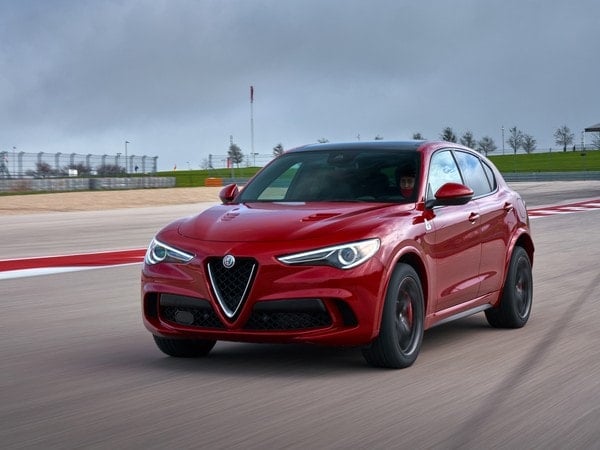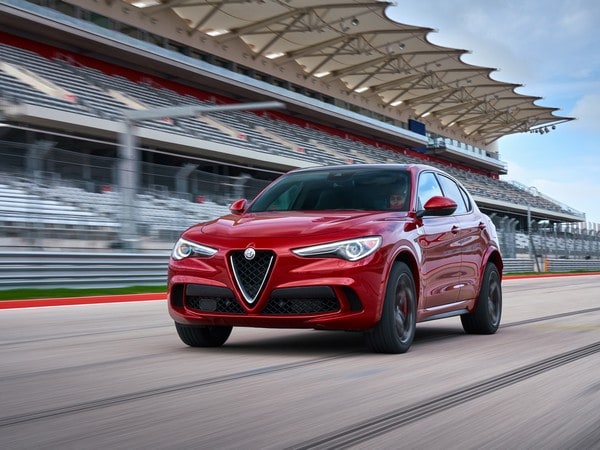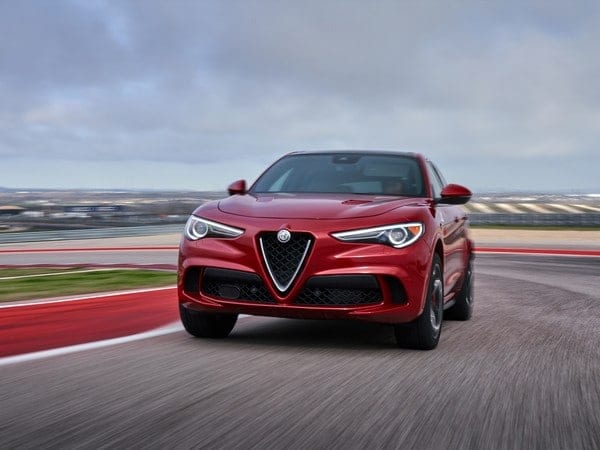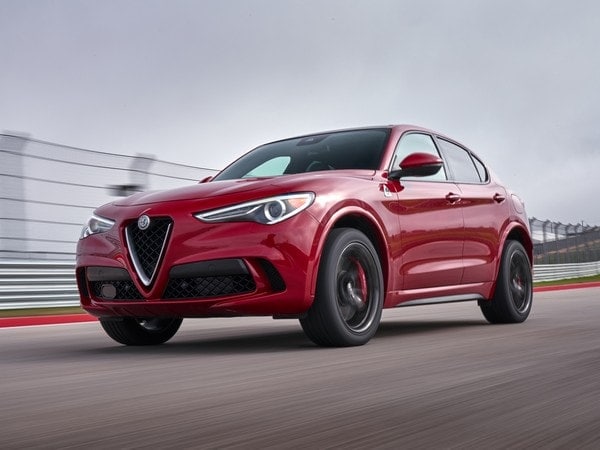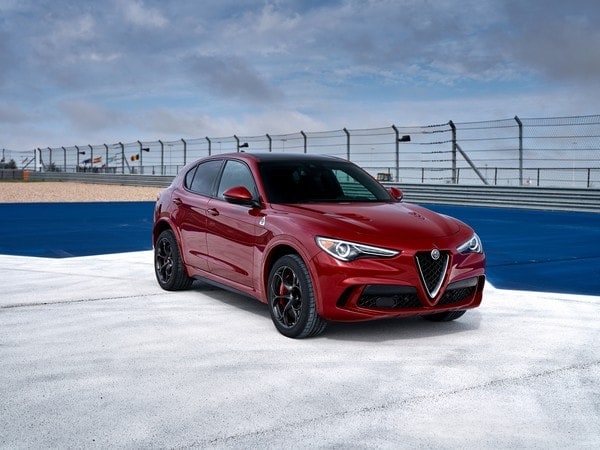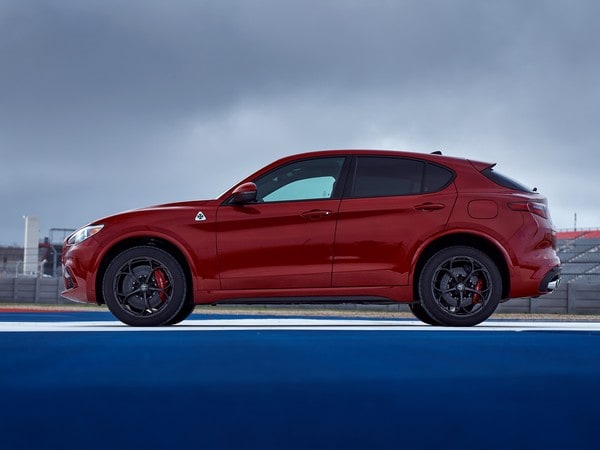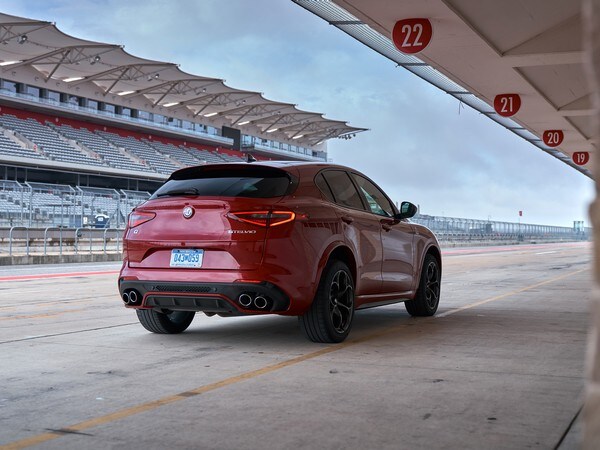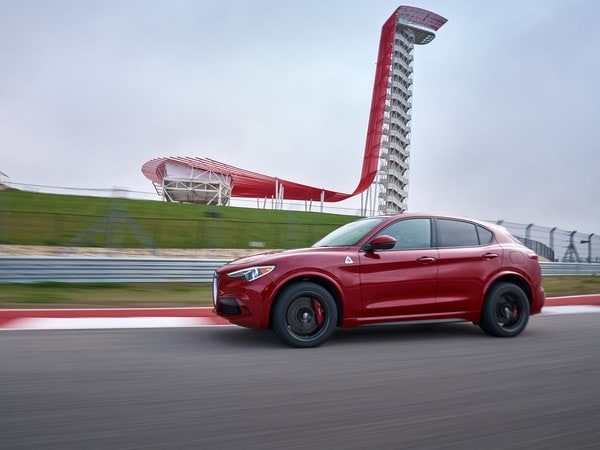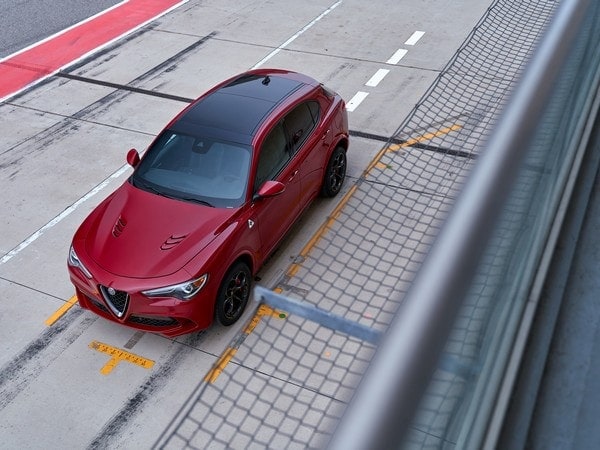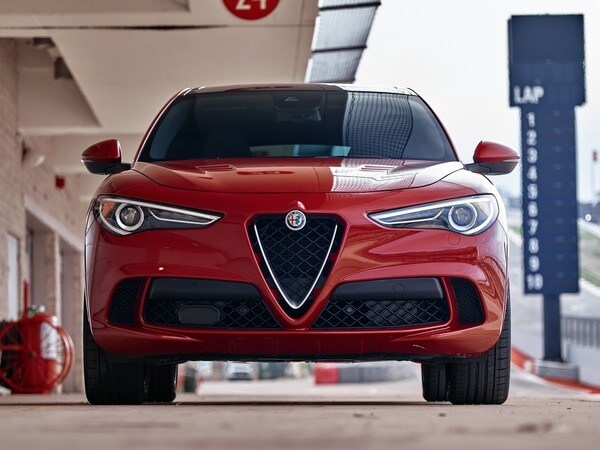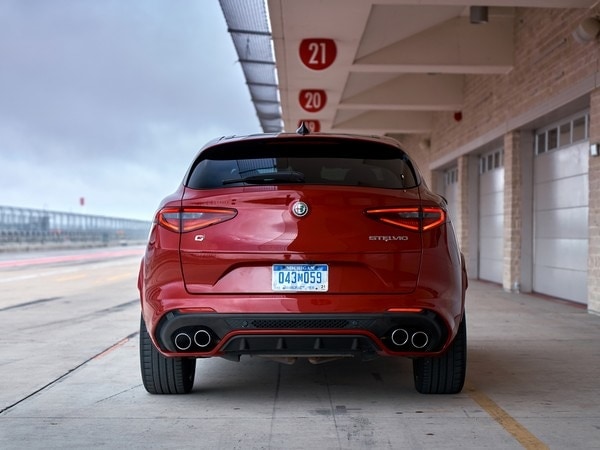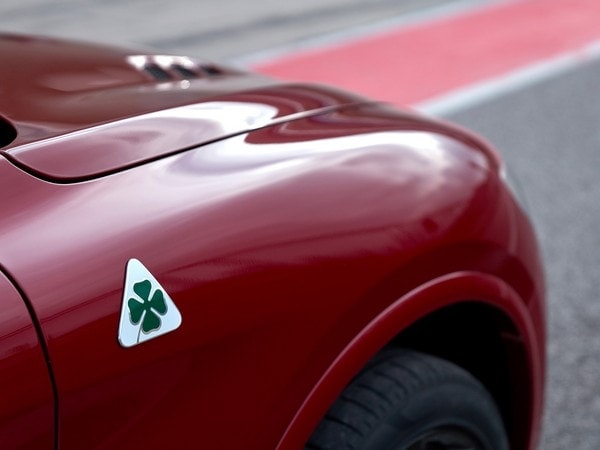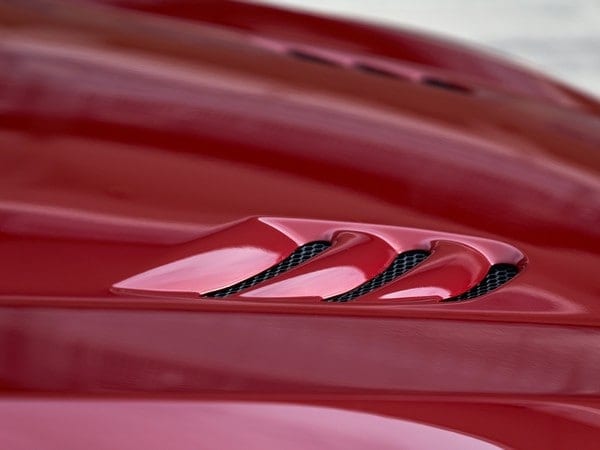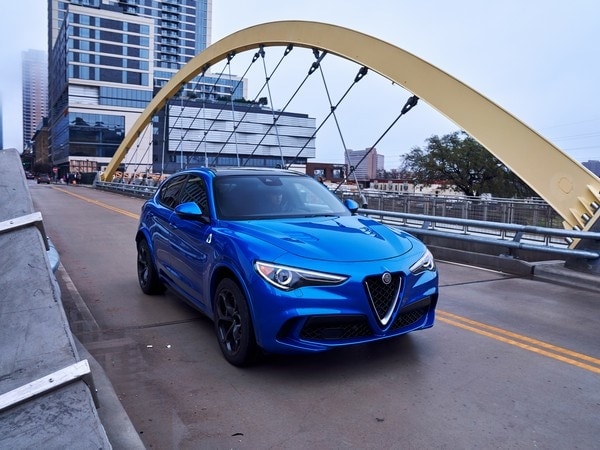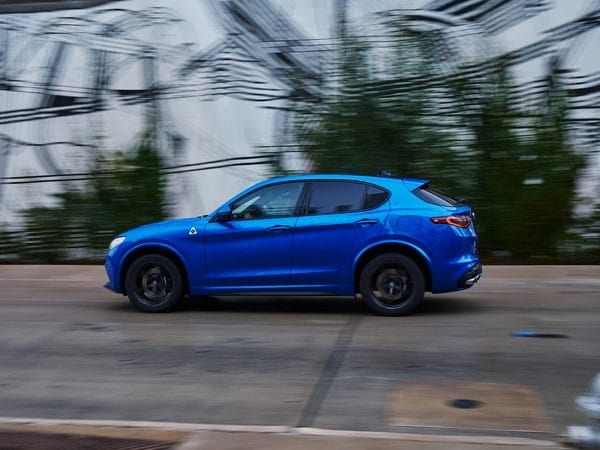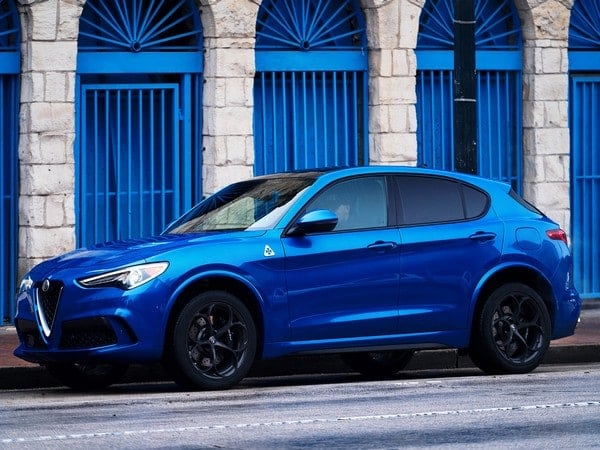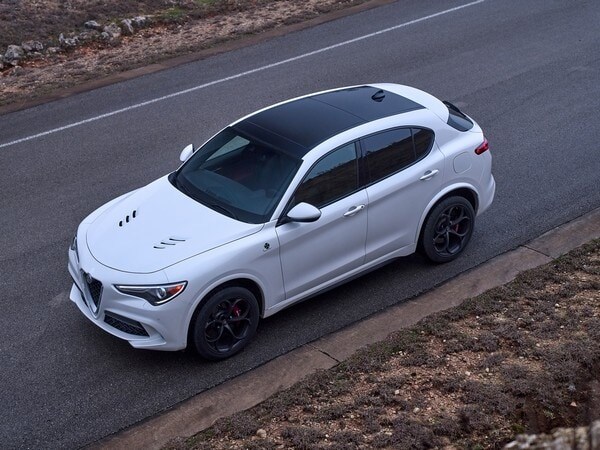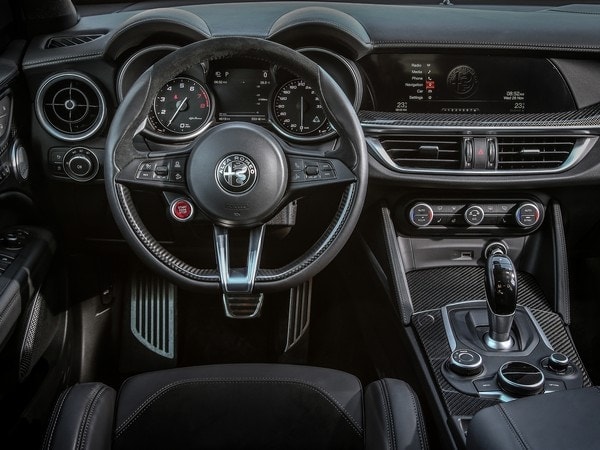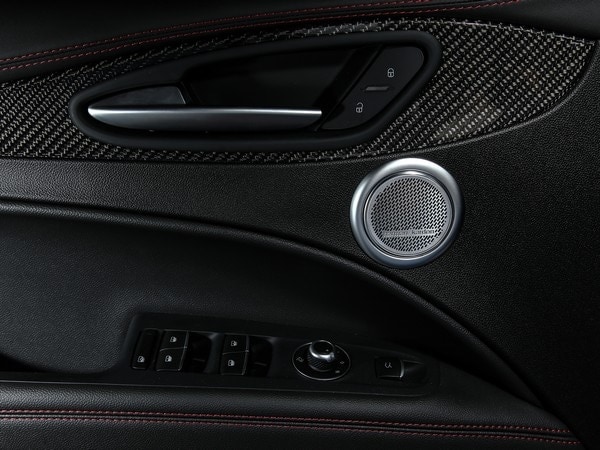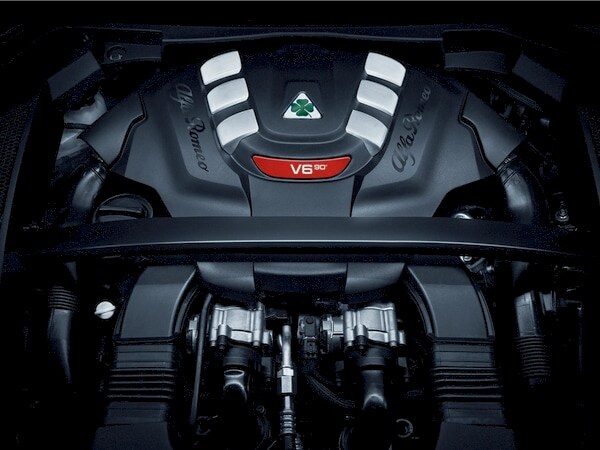When Alfa Romeo launched the Stelvio last year, it marked a spicy new entree in the compact luxury SUV segment, which has become something of a smorgasbord. As we noted in our first review of the 2018 Stelvio, although this roughly $43,000 Italian luxury SUV faces formidable rivals like the Audi Q5 and Mercedes-Benz GLC, it is “more fun, more emotional, and indeed more passionate.” The standard Stelvio will satisfy entry level luxury SUV buyers, but others with deeper pockets seeking high performance have been salivating for the monster version that has been waiting in the wings — the Quadrifoglio, which starts just over $80,000 including destination.
The Stelvio Quadrifoglio will go on sale at the beginning of the second quarter, but we recently had a chance to test it on road and track. Does this 505-horsepower Italian performance SUV have the stuff to take on the Porsche Macan and upcoming Mercedes-AMG GLC 63? The short answer is a resonating yes.
0-60 mph in what?
There are plenty of statistics that make the 2018 Stelvio Quadrifoglio drool-worthy before even stepping into it. Much of it starts with the engine, a sweet 2.9-liter twin turbo V6 derived from Alfa Romeo’s cousin, Ferrari. That alone may be reason enough for some buyers to go for the Stelvio Quadrifoglio, and we could hardly blame you. As in the Giulia, the Stelvio Quadrifoglio replaces the standard 280-horsepower turbocharged 4-cylinder with the Ferrari-derived V6. The V6 is a substantial upgrade, making 505 horsepower and 443 lb-ft of torque. But, the Stelvio benefits from standard all-wheel drive versus the rear-wheel-drive setup for the Giulia Quadrifoglio.
That extra grip means added assurance in inclement weather. And it brings us to the next impressive stat: the Stelvio Quadrifoglio’s 0-60 mph time. Alfa initially said it would be 3.9 seconds, which would match the larger and more expensive ($125,000) Porsche Cayenne Turbo. But that number is wrong. With some tweaking, Alfa managed to bring that benchmark down to 3.6 seconds. That blistering time beats even the Giulia Quadrifoglio.
Road manners
In real world driving, Alfa Romeo’s high-performance SUV speaks in the language it knows best: emotion. That was evident from our first taste of asphalt in and around Austin, Texas. Here the toll roads have some of the highest speed limits in the nation–80 mph–and getting the Stelvio up to that number was a delight. If you don’t believe its twin-turbo V6 is derived from Ferrari, just listen to it. Between the engine’s revs and the exhaust’s snap, crackle and pops, the harmonies made by the Stelvio Quadrifoglio sound like symphony. Beyond its sweet harmonies, the engine is a motive force to be reckoned with. Turbo lag is all but nonexistent, and it has the thunder to launch this Italian SUV with confidence and grace.
As with the standard Stelvio, there are driver-adjustable modes that spell out DNA. D is for Dynamic, N is for Natural, and A is for Advanced Efficiency. In the Quadrifoglio, there is a fourth: Race. If there’s one thing to be aware of with the Stelvio Quadrifoglio compared to its rivals, it’s the stiffness of its ride. This SUV is built for performance and its suspension won’t let you forget that. As with the Giulia, this is most apparent when rolling over rough pavement. The suspension setup that allows the Stelvio Quadrifoglio to cling to asphalt in hard cornering also means it rides notably stiffer than even a Porsche Macan, even in the N and A modes. Switch to D or Race, and the adaptive suspension stiffens even more.
Also: See the 12 Kelley Blue Book Best Buys of 2018
Track fiend
After a couple of hours on the road, we had the chance to drive the Stelvio Quadrifoglio in a place where speed limits don’t exist: a race track. We wound our way back to Circuit of the America’s, or COTA, a 3.4-mile, 20-turn track that is home to F1 races. Here we were turned loose in production-spec models, although these were all fitted with $8,000 optional carbon ceramic brakes. If you really plan on taking your Stelvio to the track, these brakes’ ability to resist fade can be worth it. Otherwise, you’ll probably want to save the money. We can say the same for the $3,500 carbon fiber Sparco racing seats. We actually found the standard seats more comfortable and ergonomic.
Lap after lap after lap, the Stelvio proved to be more and more fun to drive. We drove it mainly in the Dynamic and Race modes. In addition to further stiffening the suspension and optimizing the engine, 8-speed transmission and steering, Race mode kills the Stelvio’s safety nets like traction control. When engaged, it’s easier to break the rear loose thanks to the Stelvio’s ability to send all its power to the rear wheels, engaging the front only when extra traction is needed.
But even in the D mode, you can still experience plenty of thrills. Here you get the benefit of the Alfa’s safety systems yet you still can slide it around. The Stelvio Quadrifoglio might be a 2-ton-plus SUV, but you’d be hard pressed to know it from flogging it on a track. This is truly a sports car of SUVs.
The takeaway
Of course, the Stelvio Quadrifoglio isn’t the only high-performance SUV out there. But it, like its standard sibling, has a trait that eludes almost all others: emotion. The Porsche Macan has a fancier interior and a plusher ride, but when driven back to back against a Stelvio, it just doesn’t have the same pronounced personality. The Macan feels almost too well-mannered, too strict.
The Stelvio, you just can’t ignore. Yes, its resale value and long-term quality are still questions awaiting answers. But one thing we know is that it screams with emotion. It has charisma, it has guts, it has style and gravitas. You could also rationalize that at $80,000 it packs more value for the money than other high-performance SUVs. But who are we kidding about being rational? The Stelvio Quadrifoglio isn’t just a power play–it’s a passion play.
More Compact Luxury SUVs…
Check out our Compact Luxury SUV Buyer’s Guide for a look at what’s new and what’s next.
